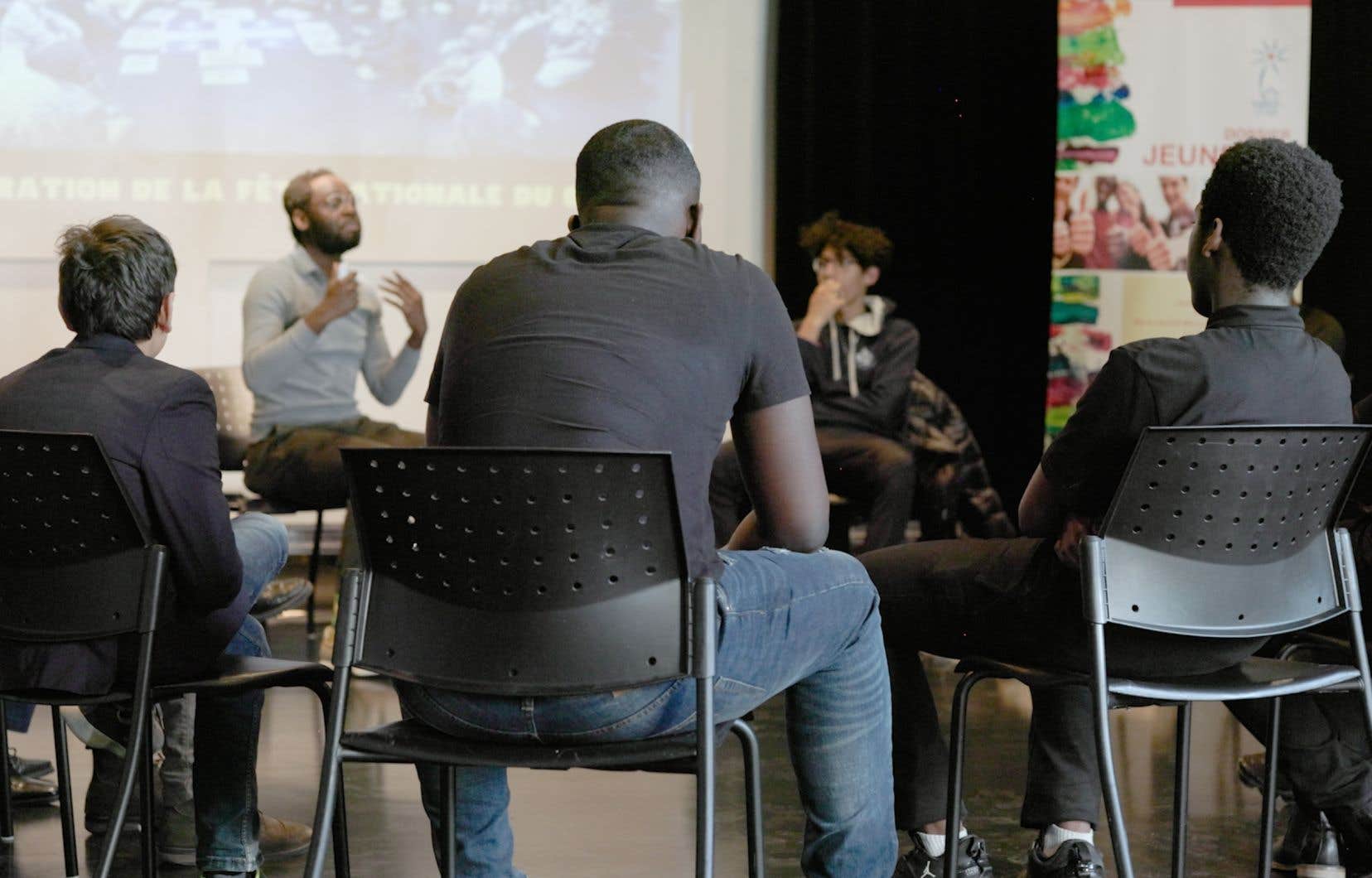Do you know what depression is? The question is thrown at a small group of boys aged 10 to 19 gatheredat Maison d’Haïti, in Montreal,to discuss mental health after school. “It’s when we have bad desires that go through our heads”, answers Walid, 12 years old.
The workshop is organized by Projet Gars, one of the few initiatives that allow boys to discuss subjects that are still taboo.
“We invite them to come and discuss with us on all the subjects that concern them: bullying, romantic relationships, emotions, sexual consent,” explains the project manager at the Maison d’Haïti, Orlando Ceide. He describes Project Guy as an intervention, education and awareness program on issues relating to toxic masculinity.
For the professor of the School of Social Work at the University of Sherbrooke Philippe Roy, this kind of initiative is necessary. “It really breaks the social isolation of men, by normalizing what is experienced,” he explains.
According to a survey carried out last January among nearly 18,000 people aged 12 to 25, one in five young people say their mental health is fair or poor. Among these people, 21% of boys say they experience anxious or depressive symptoms. “We don’t measure diagnoses of anxiety or depression, but many of the symptoms that young people report to us, whether it’s agitation, persistent worries, sadness, insomnia, so symptoms that, clinically, are linked either to anxiety or to depression”, nuances the DD Mélissa Généreux, professor at the Faculty of Medicine at the University of Sherbrooke and co-author of the survey.
In this regard, boys perform better than girls (52%) and people belonging to another gender identity (73%). Yet, Statistics Canada reveals a suicide rate about three times higher among men than among women. This apparent contradiction highlights a major challenge for public health: the expression of depression in young men is often masked, made invisible by the social norms that structure their behavior.
Statistics that do not tell everything
In her investigation, the DD Mélissa Généreux notes a gap between the two sexes. “If we ask young boys or girls to tell us about their symptoms of agitation, sadness, irritability, it’s true that young girls are more likely to talk about it. On the other hand, when young girls and boys are asked: “During the past two weeks, have you ever thought that you would be better off dead or dead, or hurting yourself? ”, there, the proportion is still quite significant among boys too, who answer in the affirmative. »
Boys are underrepresented in mental health statistics, but this theoretical finding does not necessarily mean that they are better off. “I don’t think we have to conclude that our young boys are fine and that we don’t need to provide them with some form of help. Ill-being is expressed in a different way with them,” notes the DD Generous.
Professor Roy agrees. For him, boys are more likely to develop a hidden form of depression. “We’re not going to express so much sadness or a depressed mood, but we’re going to express anger, we’re going to have more conflicts, we’re going to have more high-risk behaviors, like driving your car excessively, not attached , blind drunk. We are going to play a little with death, in a conscious way, ”he adds.
A question of socialization
From an early age, girls are encouraged to develop their emotional literacy. “On the cover pages of magazines for teenage girls, we read ‘Am I a good friend?’, ‘How to fix a broken heart in 5 steps'”, illustrates Philippe Roy.
Young boys are less likely to learn to express their emotions. A lesson highlighted by Wolf Bob Emerson Thyma, the resident psychiatrist who leads the workshop on mental health at the Maison d’Haïti: “Our society has conditioned us to say to ourselves: ‘As men, it is we have to be strong, we have to be brave.” We cannot show that we are vulnerable. »
At the Maison d’Haïti, the workers noted that mental health remains a more difficult subject to discuss with boys. “They are socialized in a society where the man is perceived as someone who does not cry”, explains Orlando Ceide.
To develop a bond of trust, they organize sports activities or even collective kitchens. Young people thus feel more at ease in opening up to their reality. “We have a lot of young people who come from different backgrounds, in terms of culture or religious affiliation, and mental health issues are not approached in the same way. It remains a fairly minefield, so you have to know how to defuse it, ”adds the speaker at the Maison d’Haïti Jean wedne Collin.
Solutions adapted to all
Even if gendered education approaches can sometimes raise eyebrows, the experts consulted believe that it can be positive for some people. “What emerges somewhat as a watchword in our survey is that we must still have a differentiated approach according to gender. What can do good for our young boys, our young girls and our trans and non-binary young people is not always exactly the same recipe, and we must take into account all the needs,” explains Dr.D Melissa Genereux.
Projet Gars is thus an innovative approach for boys. “It’s like a space where we discuss with a view to redefining male identity. It is a space to deconstruct all forms of stereotypes associated with masculinity,” concludes Orlando Ceide.
Need help ?
Contact Info-Social at 811 to get help or information about your mental health or that of a loved one.
